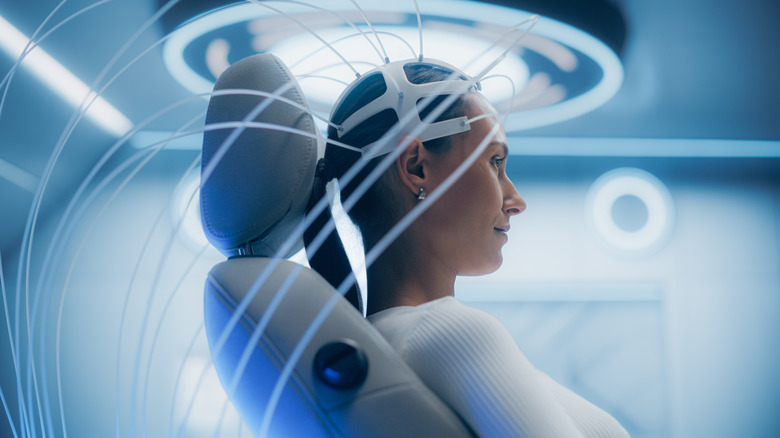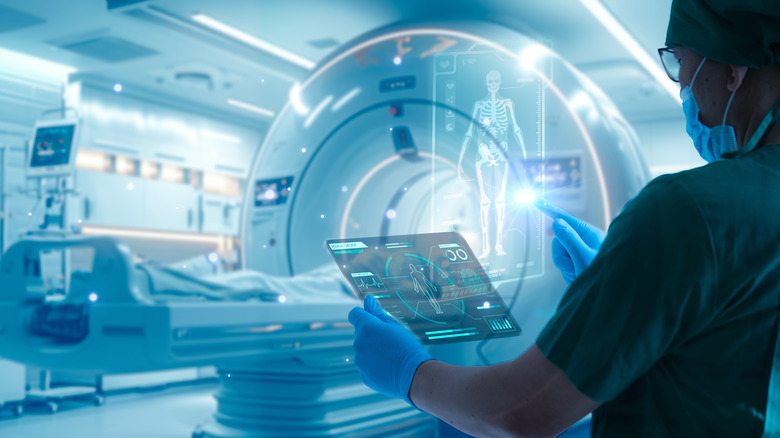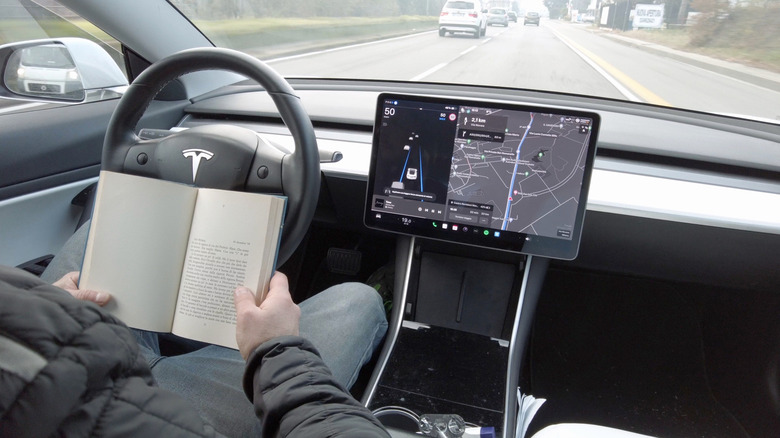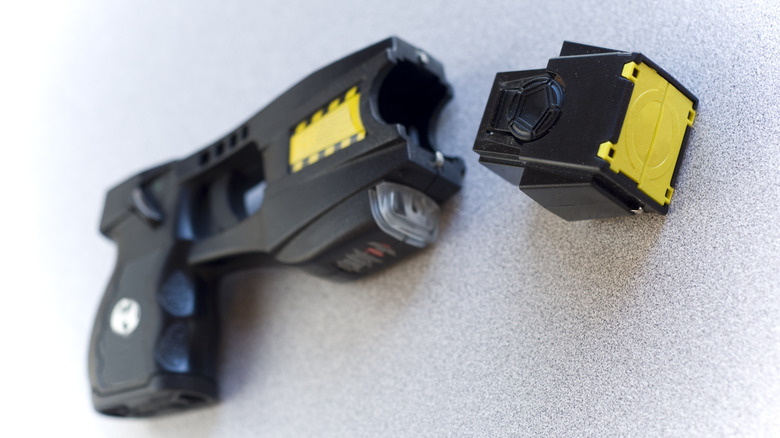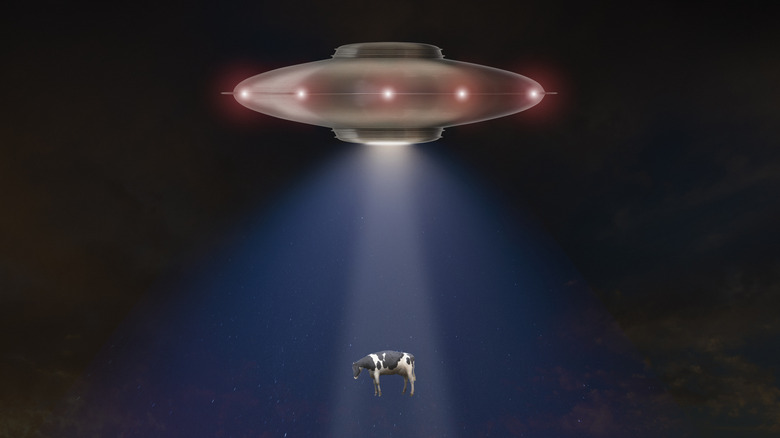12 Real-Life Inventions That Were Inspired By Science Fiction
In 1945, science fiction writer Arthur C. Clarke proposed something ridiculous: satellites orbiting Earth at exactly the right altitude to stay fixed above one spot, beaming radio signals across continents. His idea was so specific that when geostationary satellites became a reality decades later, that orbital zone became known as the Clarke Belt in his honor.
Science fiction writers aren't fortune tellers, but they might as well be. They dream up impossible technologies, not to predict the future, but to tell better stories. Yet, somehow, their wildest inventions keep materializing in the real world. This genre of entertainment serves as humanity's unofficial research and development department, exploring possibilities without the constraints of current technology or budgets.
There's something almost magical about watching fiction become fact. Technologies that once required suspension of disbelief now sit in our pockets, operate in our hospitals, and dictate entire industries. From holograms to smartwatches, the most revolutionary inventions often began as someone's wild imagination — and these twelve examples prove just how thin the line between fantasy and reality can be.
Holograms bring Star Wars and sci-fi visions to life
When Princess Leia appeared as a blue hologram in "Star Wars: A New Hope," asking Obi-Wan Kenobi for help, audiences were captivated by the idea of 3D messages suspended in mid-air. That iconic scene planted seeds in the minds of countless engineers and inventors who grew up wondering if such technology could ever exist.
Fast-forward to today, and holograms have become a powerful tool across multiple industries. In entertainment, 3D holograms power concert performances by long gone legends. Medical students can now examine 3D anatomical models that seem to hover before them, while architects present building designs that clients can walk around and inspect from every angle. But that's not all: companies are developing 3D holograms you can touch and interact with, getting us closer to that iconic scene in "Iron Man 2."
We're still working on the floating, mid-air aspect that made Star Wars holograms so magical, but the gap is fast closing. The very idea of creating and interacting with light-based simulations was sparked by sci-fi, and it continues to push researchers to break boundaries.
Tablets took a page from 2001: A Space Odyssey
Long before Apple announced the iPad, Stanley Kubrick's "2001: A Space Odyssey" showed astronauts casually using thin, flat, rectangular screens to watch videos and read news aboard their spacecraft. These sleek devices, called Newspads in the script, looked nothing like the bulky computers of 1968, when the film was released. Instead, they predicted a future where computing power could be condensed into something portable.
When the first iPad launched in 2010, many observers immediately noted the striking resemblance. The interface, form factor, and utility mirrored what Kubrick envisioned decades earlier. In fact, during Apple's legal fight with Samsung over design patents, Samsung referenced "2001" as proof that Apple's tablets had been depicted in popular culture long before any company could claim to have invented the concept.
The HAL 9000 computer interface in the film also predicted voice command interactions, that are familiar to anyone who owns a smartphone or smart speaker.
Self-driving cars echo Knight Rider's KITT
"Knight Rider" introduced viewers to KITT, an intelligent, self-aware car that could navigate traffic, make decisions, and hold full conversations with its driver. This show aired in the 1980s, when cars were still largely mechanical and the idea of a computer-controlled vehicle seemed like fantasy. Yet today, companies like Tesla, Waymo, and Mercedes are bringing that fantasy to life.
Modern autonomous vehicles are following this blueprint and come equipped with AI-powered navigation, obstacle detection, and voice assistants. While they're not quite sentient like KITT, self-driving cars can handle highway driving, parallel parking, and even navigate complex urban environments with increasing sophistication. What once looked like science fiction now powers real-world innovation in transportation, logistics, and safety.
Much more than just a cool car, KITT was a concept that sparked the imagination of future engineers. Today's driverless vehicles are the direct descendants of that inspiration, with software updates like Tesla's Actually Smart Summon bringing them closer to the conversational, decision-making partner that "Knight Rider" imagined.
The taser was inspired by sci-fi ray guns
Jack Cover, a NASA scientist and inventor of the taser, openly credited the ray guns he saw in science fiction publications as his inspiration. In fact, the acronym "TASER" literally comes from a favorite childhood story, a 1911 sci-fi novel titled "Tom Swift and His Electric Rifle." That futuristic weapon which could incapacitate enemies without killing them remained stuck to the book's pages until Cover figured out how to make the idea work in real life.
By 1974, Cover had built a working model, with further iterations developing and becoming commercially successful by the 1990s. The device works by firing electrically charged darts capable of stopping a person without causing lasting harm. This electrical current disrupts muscle control, effectively creating a stunning effect that immobilizes the target. It was a turning point in law enforcement and personal defense, introducing a sci-fi concept to real-world policing.
Today, tasers are standard equipment for police forces around the world. Their origin story shows just how powerful fiction can be — not just in entertaining us, but in offering new standards for technology that serves real societal needs.
Credit cards were predicted in Edward Bellamy's 1888 novel
In his utopian novel "Looking Backward," Edward Bellamy imagined citizens using credit cards linked to a central bank to make instant cashless purchases. Writing in 1888, when most transactions involved physical currency or trade-by-barter, Bellamy's vision of electronic payments seemed impossibly futuristic.
At the time, the idea was revolutionary. There were no sufficient electronic networks, no global banks, and certainly no plastic cards. A system where people could access their funds instantly without carrying physical money would have seemed magical to readers of that era. Yet Bellamy's vision prophesied everything from debit cards to Apple Pay. When the first charge card, Diners Club, launched in the 1950s, it brought his fictional concept into existence.
Today, credit and debit cards are everywhere, and the move toward digital wallets and cryptocurrency continues that trend. Bellamy didn't just predict a financial tool, he also anticipated the social and economic changes that would come with cashless transactions, from reduced crime to more efficient commerce. His prescient vision helped lay the conceptual foundations for our modern financial system.
The Metaverse mirrors Neal Stephenson's Snow Crash
Neal Stephenson's 1992 book "Snow Crash," a dystopian cyberpunk novel, is widely regarded as the direct inspiration for the Metaverse, even coining the term that tech companies use today. It described a fully immersive virtual world where people interacted through digital avatars, owned virtual real estate, engaged in combat, and participated in complex digital economies.
Modern platforms like Meta Horizon, Roblox, and VR Chat feel eerily similar to that fictional world. Users can now attend virtual concerts, purchase accessories for their photorealistic avatars, and buy virtual assets that have real monetary value. Even the language and architecture of these platforms echoes Stephenson's vision. The social dynamics he imagined are playing out in real time across multiple platforms.
While we're still working towards the seamless, fully immersive experience that "Snow Crash" depicted, the fundamental concepts are already here. The novel served as both the inspiration and roadmap for an entire generation of developers building the virtual worlds we're rapidly populating.
Video calls were everyday life in The Jetsons
By the time "The Jetsons" aired in the early 1960s, video calling wasn't entirely a new concept — AT&T had already demonstrated it decades earlier, even offering a subscription service in the mid 1960s. The service never took off, but the show took the concept and ran with it. Instead of presenting video calls as a rare, high-tech event, "The Jetsons" treated them as casually as a phone conversation, showing George chatting with his boss or family as part of daily life.
Today, that vision feels spot-on. Zoom, FaceTime, and Google Meet are commonplace in both work and home routines, especially after the COVID-19 pandemic made video calling indispensable for millions of people. What was once a novelty reserved for corporate demos has become a basic smartphone feature, available to anyone with an internet connection.
"The Jetsons" didn't stop at video calls. The same episodes that showed face-to-face conversations also imagined smart home devices, robot assistants, and moving walkways — technologies we now take for granted. The cartoon didn't just depict future tools; it also helped popularize the idea that advanced tech could be woven seamlessly into everyday life.
The smartwatch has Dick Tracy written all over it
In the 1940s, comic book detective Dick Tracy used a two-way wrist radio to fight crime, communicating with headquarters and receiving important information directly on his wrist. Later versions upgraded it to a full-fledged TV and communication device. Comic strip creator Chester Gould gave his character this device decades before miniaturized electronics could make such a thing possible.
Fast-forward 80 years, and smartwatches do all that and more. Apple Watches, Samsung Galaxy Watches, and other wearables allow users to make calls, monitor their heart rate, get directions, and even chat with AI assistants, far exceeding what Dick Tracy's radio could accomplish. Furthermore, their form factor almost exactly matches what Dick Tracy flaunted in his panels.
The comic was remarkably prophetic about both the technology and its practical applications. Dick Tracy used his wrist radio for law enforcement communication, while today's smart watches serve similar functions for emergency services, fitness enthusiasts, and anyone who needs hands-free connectivity.
Tractor beams are no longer just Star Wars fantasy
The idea of moving objects remotely using invisible beams was limited to space operas and science fiction adventures. "Star Wars" made tractor beams famous, showing massive starships pulling smaller vessels into their cargo bays using mysterious energy fields that could manipulate matter from a distance.
Today, scientists have discovered how to make tractor beams in real life using light beams, static electricity, and even sound waves. We're still far from pulling spaceships into orbit, but today's tractor beams can manipulate microscopic particles, small objects, and are even on their way to being able to separate cells within the human body. This once-futuristic technology is surprisingly applicable in medical science, where tractor beams could help doctors perform minimally-invasive biopsies.
While not at the level of the Death Star, the foundational principle of manipulating matter without contact is alive and well. Each breakthrough brings us closer to the large-scale tractor beams that once seemed impossible, proving again that fiction lights the spark and science follows with fire.
Exosuits take cues from Iron Man and Alien
First appearing in "Tales of Suspense #39" (1963), before making its way to the big screen in "Iron Man" (2008), the Iron Man's powered exosuit has long been a staple of science fiction. Other movies like "Alien," "Elysium," and "Edge of Tomorrow," have also depicted fictional suits that turn ordinary people into superhumans capable of great feats of strength and agility.
Real-life exosuits are used in warehouses to reduce worker fatigue, in hospitals to aid mobility for people with spinal injuries, and in the military to improve load-bearing capacity for soldiers. While they don't provide flight or repulsor rays, companies like SUITX and Verve Motion have developed wearable robotics that augment human movement without limiting mobility. Meanwhile, real jetpacks are being tested at Gravity Industries if you want flight capabilities.
These suits aren't as flashy as Iron Man's, but their function aligns with the same goal: giving humans mechanical advantage. The technology continues advancing, with newer models becoming lighter, more powerful, and more intuitive to use. Soon, we might achieve that seamless human-machine integration that sci-fi has promised for decades.
Language translators resemble Star Trek's Universal Translator
In "Star Trek", galactic diplomacy and exploration of new worlds were made possible with the help of a universal translator — a device that could instantly interpret any language. The translator worked so perfectly that crew members could communicate with alien civilizations as easily as talking with their shipmates, breaking language barriers across the universe.
Now, real-time translation is here. Devices like Pocketalk, Timekettle, and apps like Google Translate offer voice-to-voice interpretation in dozens of languages. Powered by AI and machine learning, these tools can break language barriers in real time, enabling smoother travel, international business, and cross-cultural friendships. Throw specialized earbuds into the mix and you get live translation during face-to-face conversations.
We haven't achieved the perfect instantaneous translation that "Star Trek" depicted, but we're pretty close. Modern translation technology continues improving, AI is getting smarter and faster, and it's only a matter of time until we exactly match Star Trek's vision.
Invisibility tech Is creeping out of Harry Potter and sci-fi
The ability to turn invisible has long been a favorite trope in both fantasy and sci-fi — from cloaking devices in "Star Trek" to Harry Potter's magical invisibility cloak. And while we're not yet vanishing into thin air, science is making progress.
Researchers are developing metamaterials that can bend light around objects, effectively rendering them almost invisible to the human eye, or at least to certain sensors. Some labs have created cloaking devices that work in narrow bandwidths of the electromagnetic spectrum or specific environments, like underwater or in thermal imaging. These materials can make small objects appear to vanish by redirecting certain waves around them, essentially creating a blind spot where the object exists but cannot be seen.
Military and academic labs continue pushing this technology closer to practical use. And while this tech is still in its infancy, it holds enormous potential for military camouflage and privacy applications.
When fiction becomes function
Many of our greatest inventions began not in labs or workshops, but as imaginative what ifs in books, comics, or on screen; fictional worlds where creativity was unrestricted. The technologies that once existed solely in stories — tablets, video calls, smartwatches — are now integral to daily life. As tech catches up with fantasy, it's clear that today's fiction often serves as tomorrow's blueprint.
We're already seeing clues. Shows like "Black Mirror" explore brain-computer interfaces, memory replay, and AI companions, technologies that are actively being researched by Neuralink and Meta. The sprawling space habitats in "The Expanse" inspire real NASA and Space X concepts for Mars colonization. Meanwhile, the AI companion in "Her" seems increasingly plausible as chatbots become more sophisticated.
Science fiction continues serving as more than entertainment. It provides a testing ground for ideas, allowing writers and readers to explore possibilities before technology catches up. Somewhere in a screenplay or sci-fi novel being written right now, the next ground-breaking invention may already exist, waiting for someone to build it.
